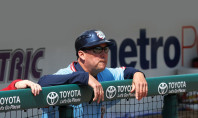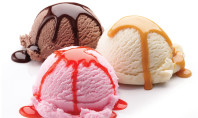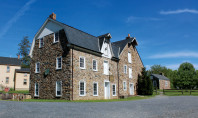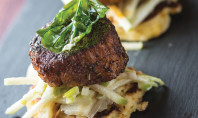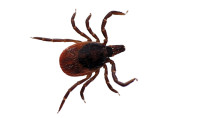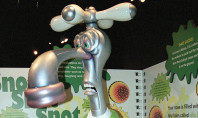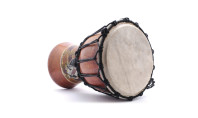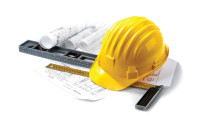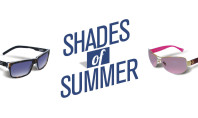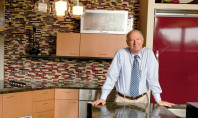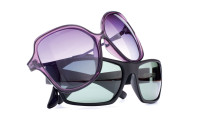Fireworks: A Piece of Pyrotechnic History
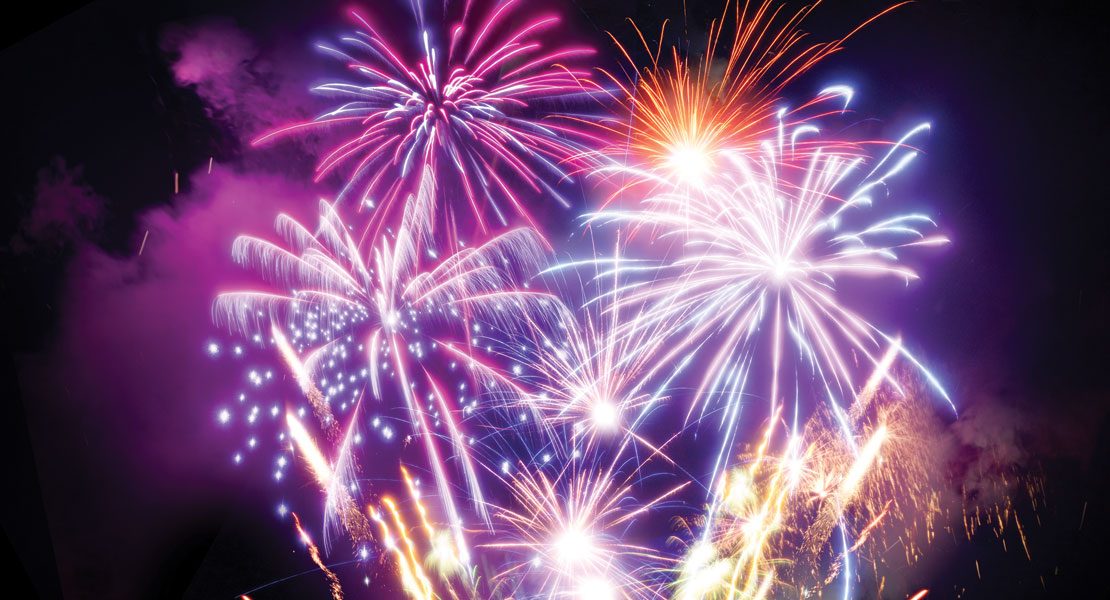
By Frederick Jerant
Fireworks on the Fourth of July! That American tradition is nearly as old as the country itself. On July 3, 1776, John Adams, wrote “The day will be most memorable in the history of America. I am apt to believe that it will be celebrated by succeeding generations as the great anniversary festival. It ought to be solemnized with pomp and parade… bonfires and illuminations [fireworks]… from one end of this continent to the other, from this time forward forevermore.”
His prediction certainly became true; across America, bustling big cities and sleepy little hamlets mark our independence with pyrotechnic displays.
And to think that some stalks of bamboo may have started it all…
Millennia ago, the Chinese discovered that stalks of bamboo (which contain natural air pockets) would explode loudly when heated. Centuries later, they began stuffing the stalks with a new invention (gunpowder), which produced even bigger explosions.
Formulas for gunpowder spread across Europe and Arabia in the 13th century. As its military uses expanded, so did the popularity of fireworks – to commemorate military victories, and for public celebrations and religious ceremonies.
During the Renaissance, pyrotechnic schools – especially in Italy – taught the arts and crafts of fireworks. European rulers loved using fireworks for special celebrations, such as weddings and royal births.
That tradition continued through the ages; for example, George II of Great Britain marked the end of the War of the Austrian Succession with a massive fireworks display in Green Park (accompanied by Handel’s suite, “Music for the Royal Fireworks”).
Today, July 4 and New Year’s Eve are the most popular dates for these displays, but they appear at other events, as well, says John Kemps, owner of Celebration Fireworks, Inc., in Kutztown.
“Casinos often offer them on Memorial Day and Labor Day,” Kemps says. “We’ve done shows for corporate and municipal anniversaries, fundraisers, NASCAR races, and other events.
Believe it or not, pyrotechnics can appear at funerals, too. “Some people want to celebrate their lives, so they request fireworks as part of the ceremony,” Kemps adds. “Or their own ashes are packed into shells and fired into the sky.”
Shells generally look like cannonballs, says Frank Nagazina, owner of Fireworks by Nagazina in Coopersburg, although some are canister-shaped.
The paper shells are filled with black powder and a bursting charge… but the key is the inclusion of “stars”… which are actually ball- or pellet-shaped chunks of flammable material that range in size from peas to golf balls.
“The stars are set precisely inside the shell in a pre-determined pattern, with a time-delay fuse,” Nagazina says. “When the charge explodes, the stars ignite and, as they travel, form a pattern in the sky.”
Depending on their materials, sizes and construction methods, burning stars can create spark tails, crackling sounds, stroboscopic or glittery effects, and more.
Fireworks even have specific names. Here are some of them.
• Peony: most common firework. Round fluffy displays with scores of streaks radiating from the center
• Chrysanthemums: similar to peony, but with a trail of sparks.
• Crossette: Many large stars that break into smaller stars, in a crisscross pattern.
• Multi-break Shell: contains several types and sizes of shells. These scatter across the sky before exploding.
• Salutes: a quick flash and lots of noise.
Regardless of the pattern, they’d be pretty dull if not for some Italian craftsmen in the 1830s. They found that adding trace amounts of additives (such as metal salts) to fireworks enabled them to create a multitude of hues.
“There are really only two colors of sparks,” Kemps says. “Gold from charcoal and potassium nitrate; and silver from aluminum or titanium. But if you add strontium nitrate, you’ll get red. Sodium nitrate burns yellow; mix those two and you’ll get orange.” He adds that other metal salts, alone or in combination, give pyrotechnicians an expanded palette.
Fireworks are sometimes paired with music for complementary effects. Kemps remembers a show his company put on for a 9/11 memorial: “We used everything from ‘Amazing Grace’ to Paul McCartney’s ‘Freedom,’ ” Kemps says. “And everything was computer-controlled, for tight synchronization.”
Warm summer evenings are perfect for fireworks display, and there are many scheduled in the Valley during the next several months. Wherever you see that artwork in the sky, though, be sure to give thanks to Chinese monk Li Tian, who lived during the Song dynasty. Supposedly, he’s the one who first filled bamboo stalks with gunpowder – and paved the way for modern aerial celebrations.
BIG BANG
Toys and games come and go…sometimes pretty quickly. Pogs, Furbys, Beanie babies, Razr scooters – the list goes on and on.
But the Big-Bang® cannon – which has deep Lehigh Valley roots – has survived over a century of fads with no changes in its basic design.
In 1907, William Studdards Franklin, a member of Lehigh University’s physics department, found that a mixture of calcium carbide and water produced a gas that, upon ignition, emitted a loud noise and a flash of light. He crafted a miniature cannon, and patented his device as the “Gas Gun.”
Five years later, fellow professor James H. Wily founded the Gas Cannon Co. in Bethlehem to manufacture them. It became the Toy Cannon Works in 1916, and the Conestoga Company, Inc. in 1924.
With its headquarters and manufacturing facilities now in Allentown, the company produces 19 different models, ranging in price from $100 to $300.
Sometimes perceived as a Lehigh Valley phenomenon, Big-Bang® cannons actually have a broad fan base. “For years, we sold them nationally in retail stores,” says Conestoga president Dave Spinosa. “Today, we get a lot of direct response from our website and a Google ad program.”
The cast-iron and brass noisemakers have even made TV appearances!
Big-Bang® cannons appeared in episodes of Pawn Stars and American Pickers on the History Channel, Spinosa adds. “We got a big response from the original airings, and the reruns,” he says. “Lots of customers were reminded of cannons they had in storage, and they brought them in for refurbishing.
“They really are a safe alternative to fireworks,” Spinosa concludes. And making that big BANG! is an activity that crosses generations.
LOCAL SHOWS
The Lehigh Valley offers many opportunities to see the rockets’ red glare this summer. Here are just a few.
Allentown:
July 4 at J. Birney Crum stadium. Show begins at 5:30 p.m., fireworks after dark.
Bethlehem:
July 4 at Sand Island, after dark. Preceded by a 7:30 p.m. concert at City Hall.
Northampton:
July 13 at Northampton Municipal Park, 9:30 p.m.
Sponsored by the Northampton Exchange Club, to close out “Community Days.”
Coplay:
(tentative) July 3, near Coplay Parkway.
For updates, visit coplayborough.org
Musikfest:
August 11, 9:45 p.m. Sand Island.
Das Awkscht Fescht: August 3,
at the festival in Macungie, 9:30 p.m.
Coca-Cola Park: Baseball and fireworks: the all-American combo!
Scheduled for June 8, 14, 28, 29; July 1, 2, 3 (in 3-D), 12, 19;
August 2, 16, 30. For details, visit ironpigsbaseball.com


